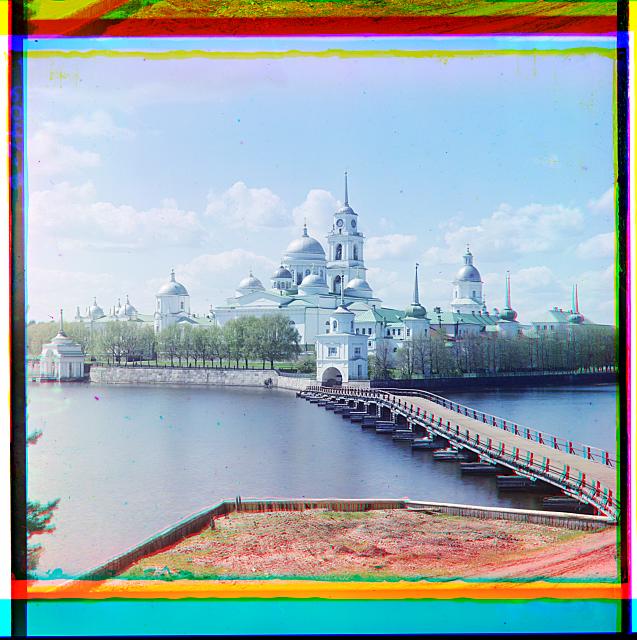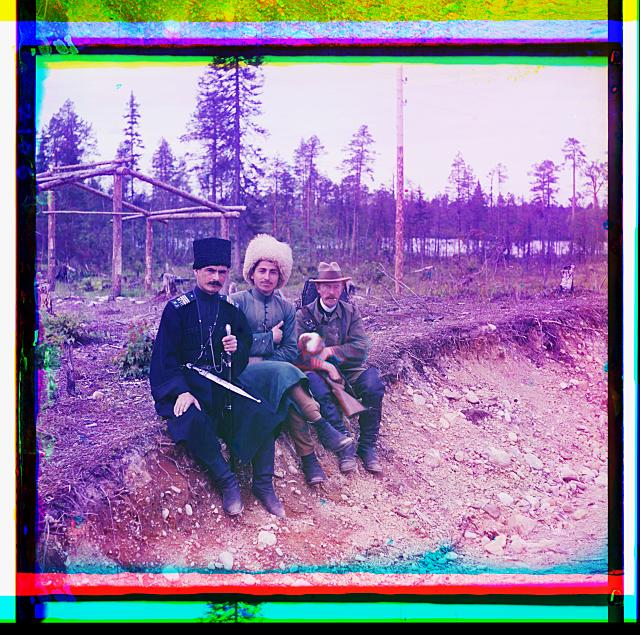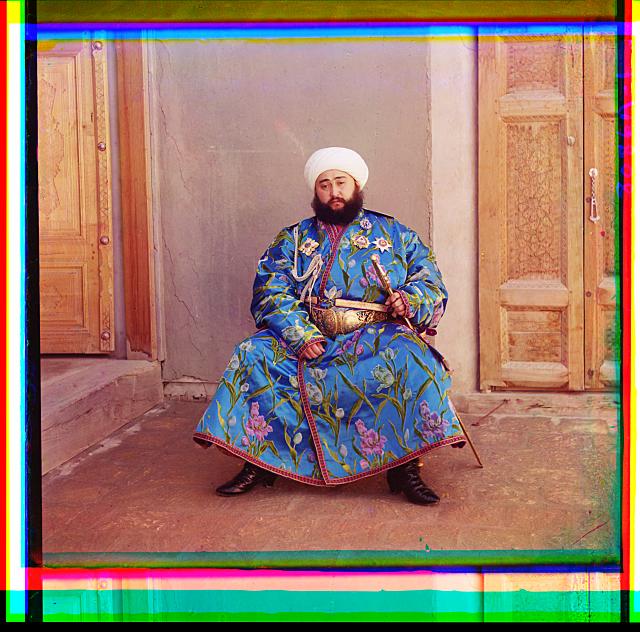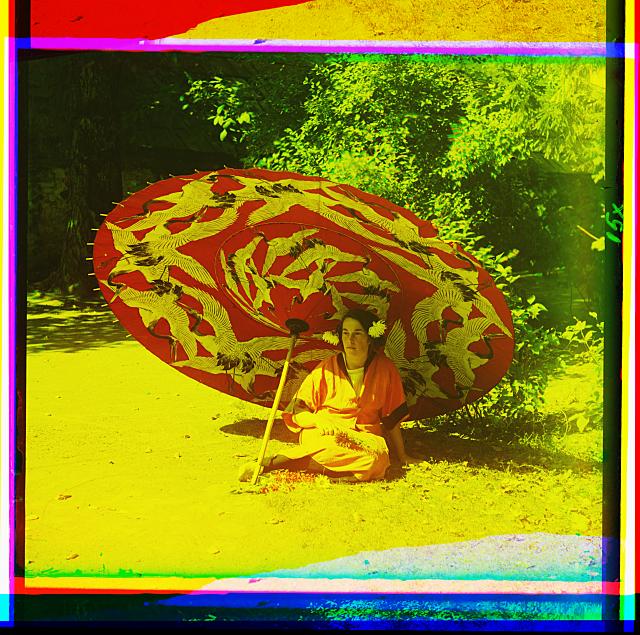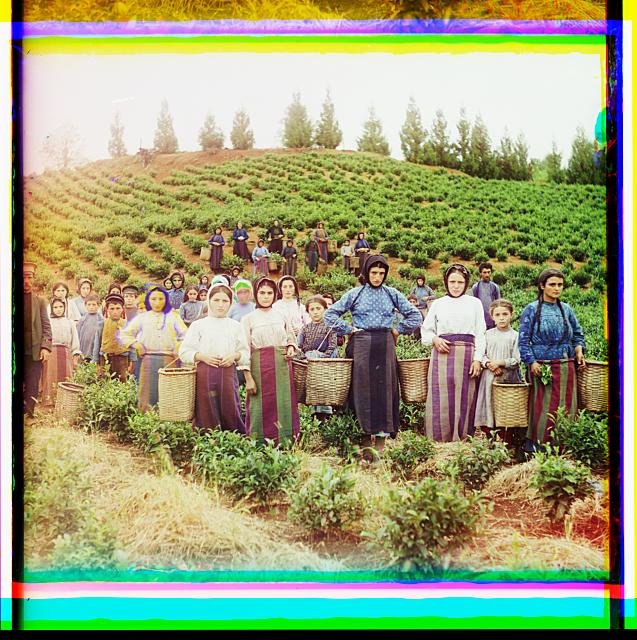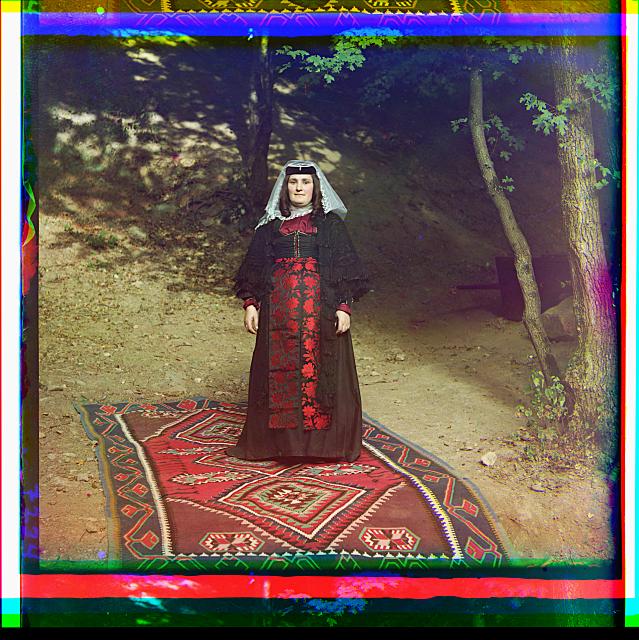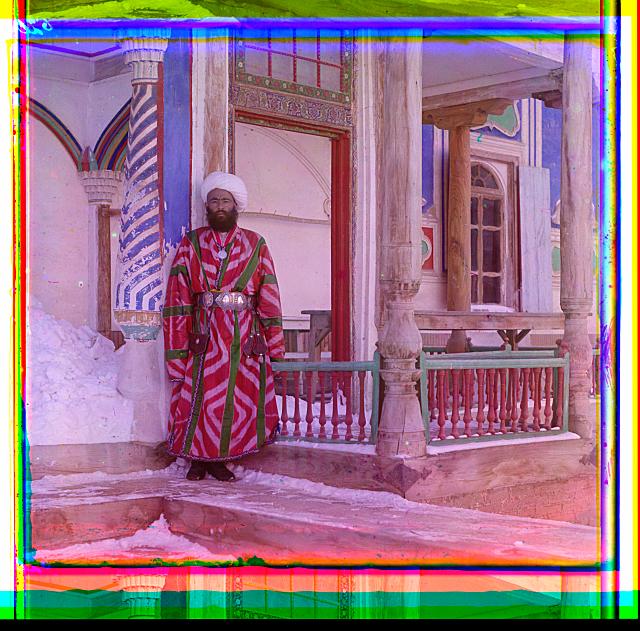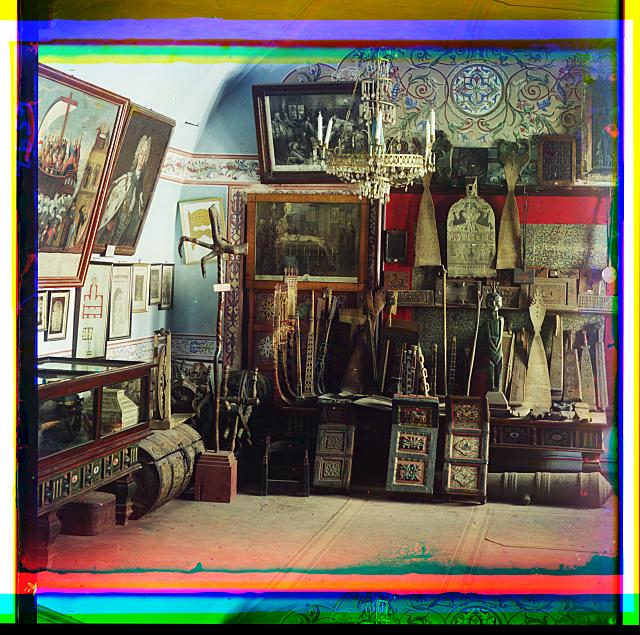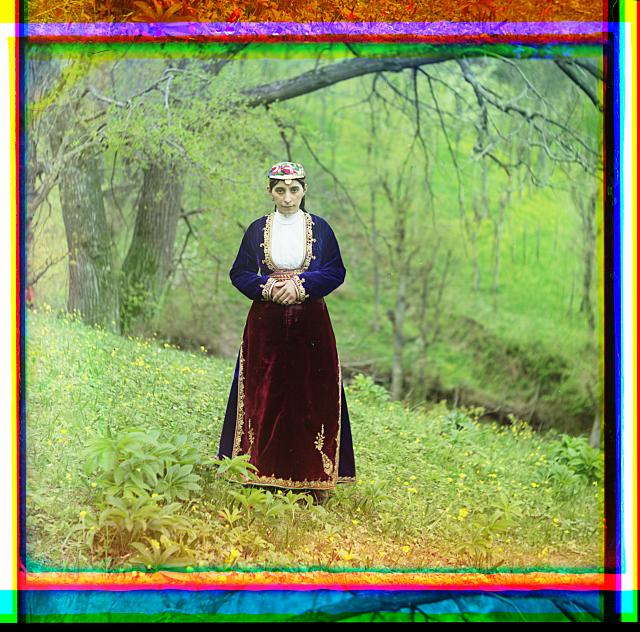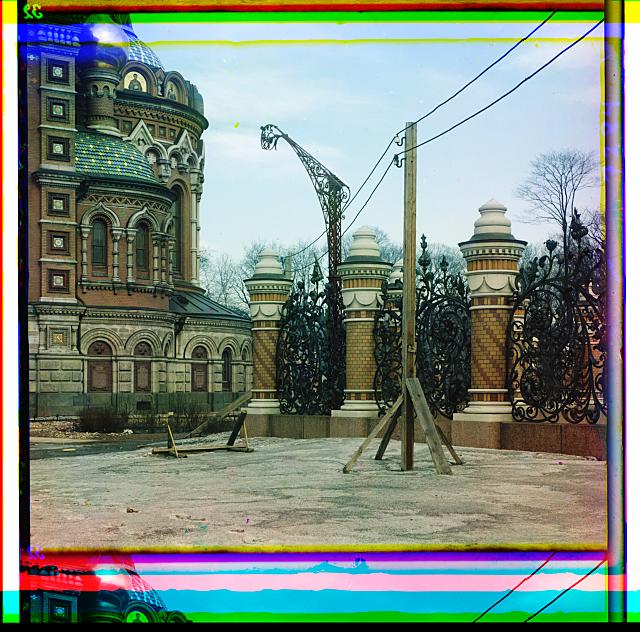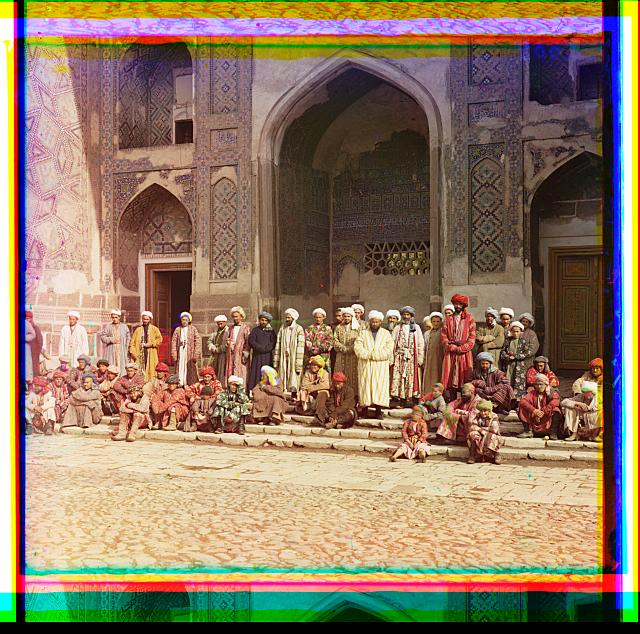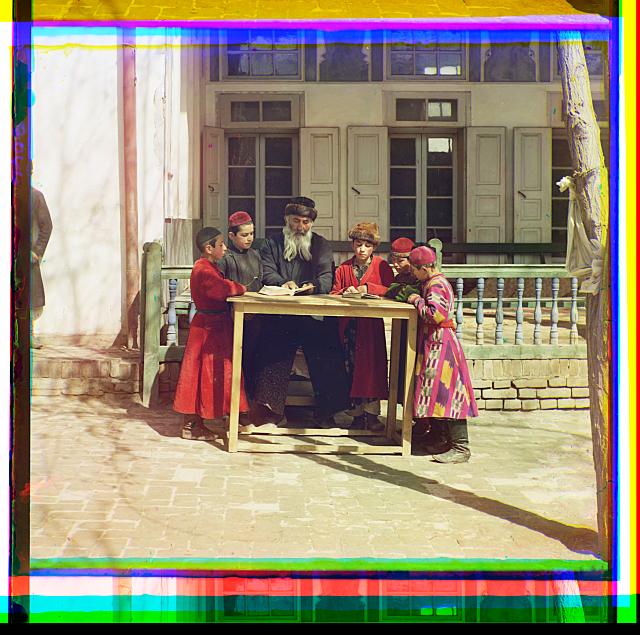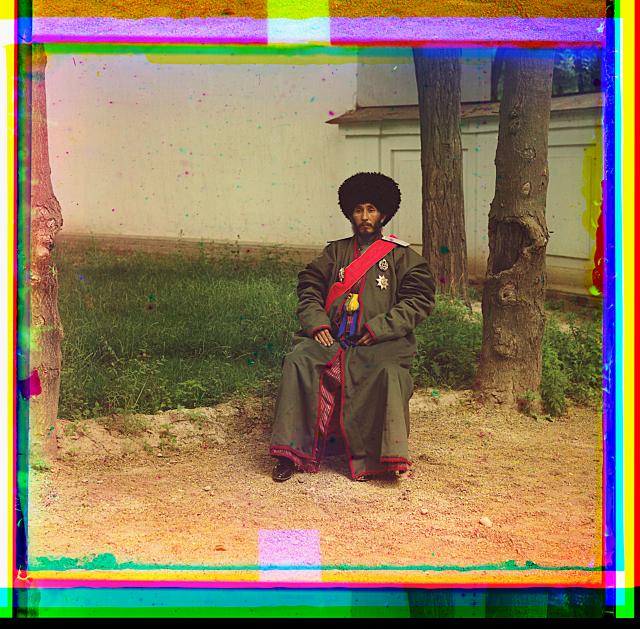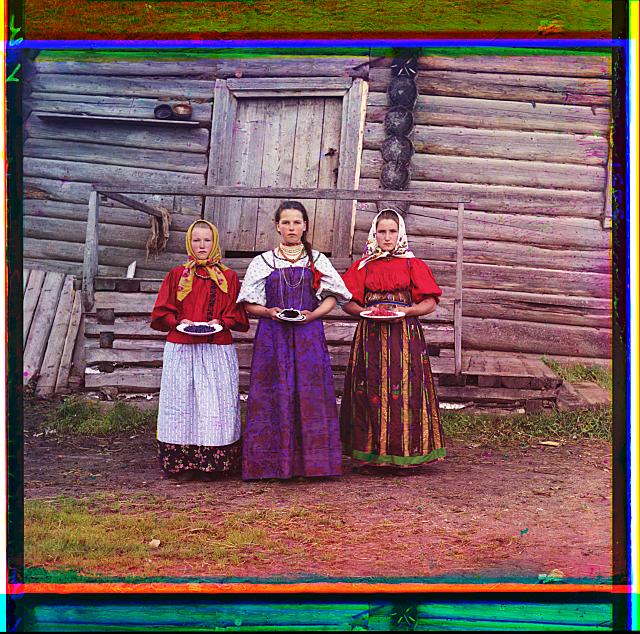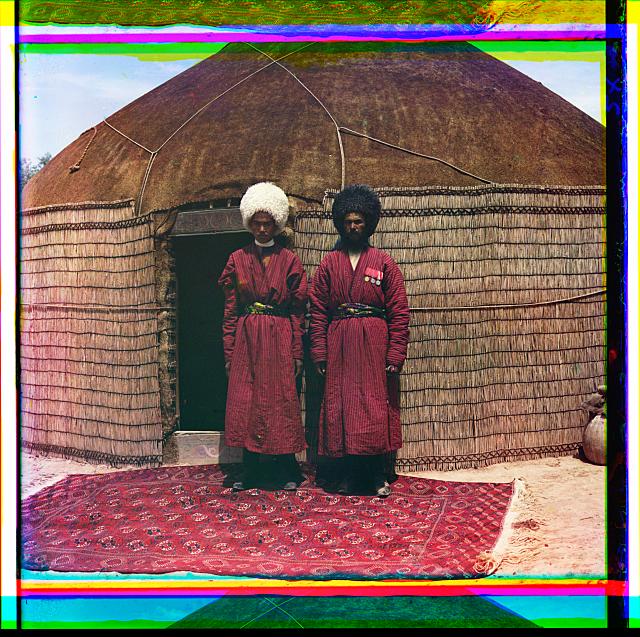Today, photographs are taken from devices in our pockets, then beamed to a worldwide audience in a matter of moments. At the dawn of photography, the equipment was large and cumbersome, developing glass plates to reveal images was an intense process, and color, of course, didn’t exist. To take photos required an expedition of many to haul all this equipment, often at great expense. Simple black and white photos involved lots of labor to produce.
So add to this a great invention – shooting in color, before the invention of color film. This was accomplished by shooting three images, one quickly after the other, each with a red, blue and green filter over the lens. After the film was developed, they could be projected using three magic lanterns, also with red, green and blue filters, overlapping to recreate the color image. This is the screen plate color process. Prokudin-Gorskii had studied the technology in Germany, but invented his own camera and projectors for his photographs.
From 1909 to 1915, before the invention of color film, photographer Sergei Mikhailovich Prokudin-Gorskii won the support of Tsar Nicholas II to set out on an expedition to photograph the Russian Empire. By 1918, the Empire had fallen, and Prokudin-Gorskii was living in Paris. In 1948, after his death, the Library of Congress bought the entire collection from Prokudin-Gorskii’s heirs.
Here are some examples of the collection. To view the entire collection, visit The Library of Congress – The Empire that was Russia, The Prokudin-Gorskii Photographic Record Recreated.
- View of the monastery from Svetlitsa. Seliger Lake, Volga River Region, Russia.
- Group. (Myself with two others, Murman). Self portrait of Sergeĭ Mikhaĭlovich Prokudin-Gorskiĭ. Karelia, Russia.
- Emir of Bukhara. Bukhara. Bukhoro, Uzbekistan.
- Study of a girl.
- Group of workers harvesting tea. Greek women. Chakva, Georgia.
- Georgian woman. Georgia.
- Bukhara bureaucrat. Bukhara. Bukhoro, Uzbekistan.
- Museum. Iona’s room. Rostov Velikii. Rostov, Volga River Region, Russia.
- Armenian woman in national costume. Artvin, Turkey.
- Man with camel loaded with packs.
- Detail of church (of the Resurrection on the Blood), St. Petersburg, Russia.
- On the Registan. Samarkand. Samarqand, Uzbekistan.
- Group of Jewish children with a teacher. Samargand, Uzbekistan.
- Isfandiyar, Khan of the Russian protectorate of Khorezm(Khiva), full-length portrait in uniform, seated on chair, outdoors.
- Peasant girls. Volga, Baltic Waterway, Russia.
- Two men standing on a rug, in front of yurt
Related posts:
posted by Trout Monfalco
